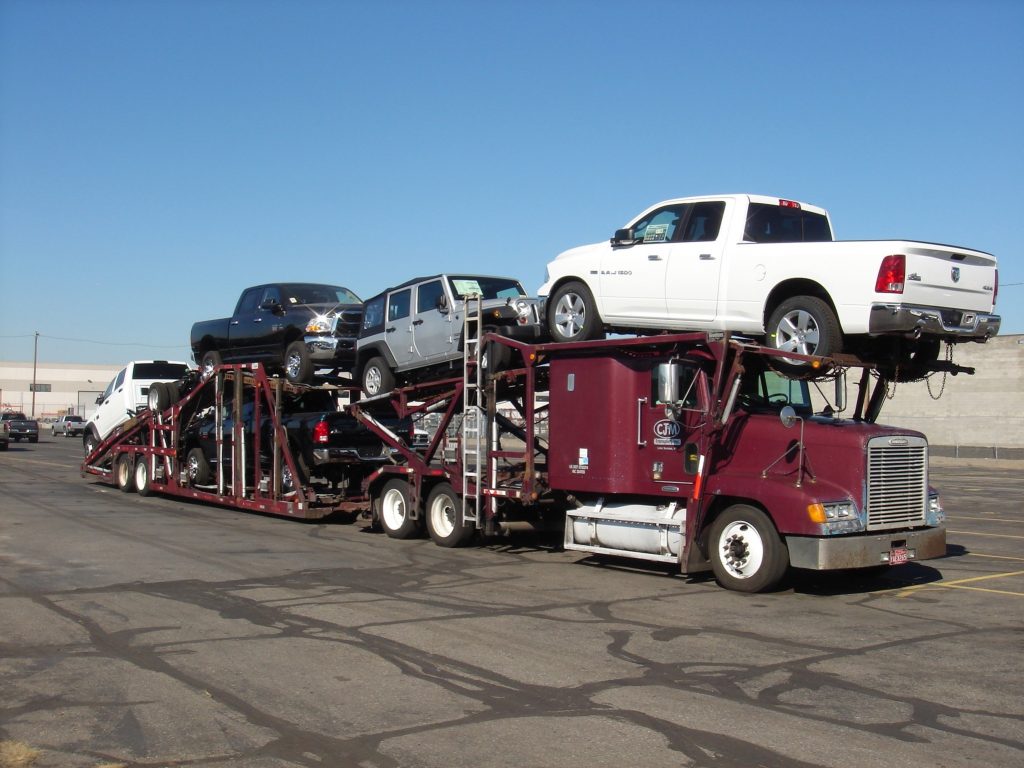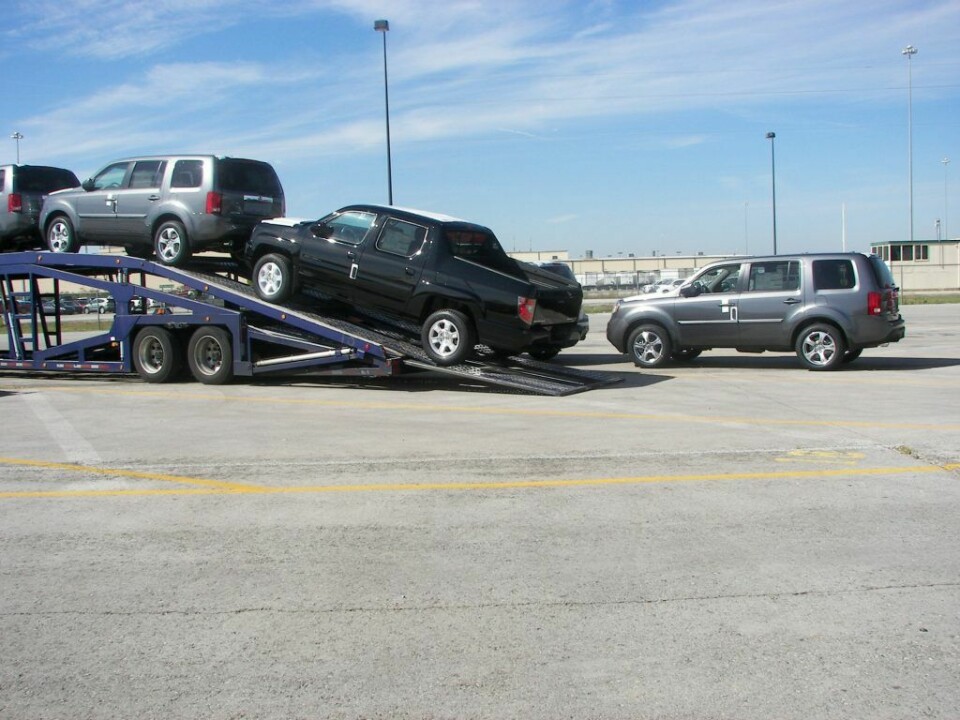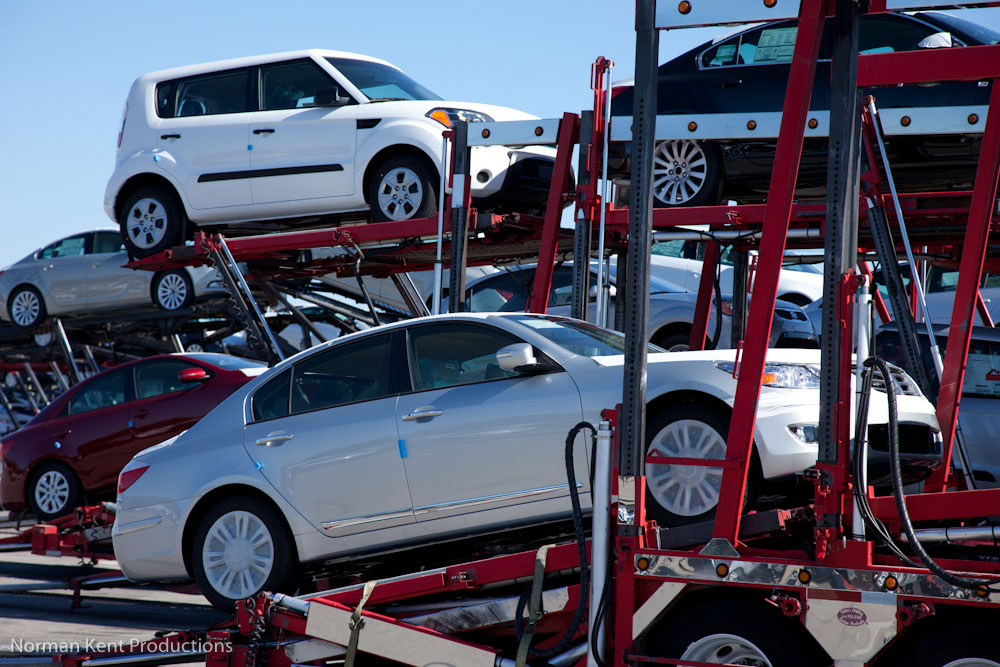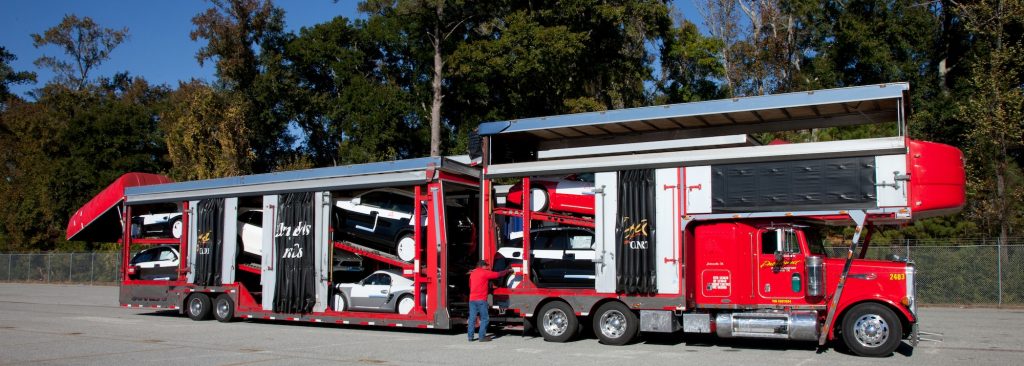American hauliers: Adding up the miles
 Constraints on rail capacity and changing demand could see road hauliers covering greater distances, as well as facing greater challenges
Constraints on rail capacity and changing demand could see road hauliers covering greater distances, as well as facing greater challenges
The fact that the majority of volume vehicle movements in North America use rail – perhaps for 70-75% of miles covered, by some estimates – would suggest that most truck deliveries concentrate on first- and last-mile legs between plants (or ports) and railheads, and railheads and dealers. However, not least as a result of continuing velocity issues on the North American rail network, US and wider North American trucking services continue to grow not only in volume but also in distance, as road hauliers and OEMs explore longer trucking routes.
In this story...
In principle, at least, long-distance trucking in the US is not new, uncommon, or legally discouraged. Comparing the US to markets of similar size or distance, such as across India or China, for example, reveals just how far those countries have to go in establishing themselves as genuine single markets. Indian states and Chinese provinces often have confusing and conflicting rules on truck sizes, loading rules, enforcement and even tax and labour laws.
The European Union, another continent integrated as a single market, is by its nature similarly complicated by differences between national laws. While Brussels has made efforts to harmonise legislation, in reality there is both a patchwork of different rules on equipment dimensions and such like, as well as specific restrictions on foreign-licenced operators working in other countries. The current fracas in Europe over Germany’s recent minimum wage law, which is impacting foreign drivers as well, further demonstrates the difficulties.
Little of this applies for the US. At least across the continental mainland, roads are contiguous and rules and regulations generally harmonised across the states. However, that is not to say that long-distance trucking is without its complications, including different legal interpretations, varying environmental legislation and increasing driver and capacity issues. Likewise, trucking across the borders into Canada or Mexico encounters quite specific legal restrictions. For these reasons, as well as the difficulty competing with rail on longer distances, most carriers, especially smaller and mid-sized companies, tend to concentrate their fleets and networks into regional patches. Nevertheless, the industry is showing some appetite for its trucks to go further.
The largest carriers in North America, including Jack Cooper and United Road Services, cover the continental US and much of Canada, with some offshoots in Mexico, and can make at least some claim to being ‘pan-North American’ in their scope. However, most services are generally more contained, and cross-country or border services are more likely to be part of a bundled package that includes third party providers.
Jack Cooper Logistics – the logistics and used car distribution arm of Jack Cooper, which also acts as a transport forwarder – covers the full scope of North America, although not always with its own assets. “We don’t do trucking in Mexico, but we’re a 3PL [third party logistics provider] for an OEM in Mexico,” clarifies Andrea Amico, president of the division. He adds that while it isn’t common to do multi-country routes, there are many requests for long-haul services.

Second largest carrier United Road moved more than 3m vehicles in 2014 from more than 75 locations throughout the USA and Canada, according to Kathleen McCann, chief executive officer. “Customers request a variety of routes. Most of our customers will inquire into countrywide service availability as well as smaller geographic concentrations. Also, multiple inquires carry interest in participation for business in Mexico,” she adds.
As with its market rivals, Fiat Chrysler Automobiles (FCA) mainly uses the rail network along with considerable truck haulage from plants and regional nodes to dealers and customers. According to a spokesperson for its logistics department, road haulage also provides FCA with supplemental capacity when required to handle special moves, and unexpected growth or market demands, including over long distances.
Some of those exceptional services of late have come from deviations from rail. Glenn Clift, president of Glovis America, which manages logistics for Hyundai Motor and Kia Motors, recently pointed out at the 2015 FVL North America conference how Glovis operates one of the largest truck direct delivery areas of any assembly plant in the US, out of Hyundai and Kia factories in Alabama and Georgia. In some cases, the company trucks vehicles around 1,000 miles (1,600km) from the factory, with most routes now between 250-500 miles. According to Clift, Glovis is considering extending some trucking routes even further, in part because of rail velocity issues.
There are also examples of medium-sized carriers that have expanded their service routes. Brad Childs, president, sales and operations at Proficient Auto Transport, says his company, while based in the south-east US, is licenced to haul vehicles across the country, giving it operational flexibility to accommodate customers’ needs.
“However, our primary network is within the south-east,” says Childs. “Multiple plants, ports and railheads [in the region] help to support our network, and there are also operational advantages such as favourable weather conditions and fewer tolls.”
Proficient’s average length of haul is long by industry standards, at more than 300 miles, whereas Childs says its competitors are more heavily focused on short-haul moves from various railheads. The vast majority of Proficient’s business has some aspects of countrywide or even multi-country services in the case of imports or exports moving to or from ports, he adds.
"Most of our customers will inquire into countrywide service availability as well as smaller geographic concentrations. Also, multiple inquires carry interest in participation for business in Mexico" – Kathleen McCann, United Road
“The volume of export business of vehicles manufactured in the US is growing substantially, or at least our portion has been,” points out Childs. “We have also experienced an increase in long-haul rail diversions to over-the-road movement.”
LMR Trucking, a carrier which operates mainly in the south-east and north-east, has seen its average haul grow, with regular routes in excess of 700 miles, according to its president, Matt Rollings.
“On average we have a longer haul than most OEM hauliers. We go from South Carolina to the New Jersey/New York line, for example,” he says. “However, for any really long runs, customers will make every effort to obtain a rail service. We can’t compete with that.”

Despite forays into longer distances, most medium-sized and smaller carriers operate regionally, depending on subcontractors to cover further distances where required. Nationwide Auto Transport, for example, has its fleet operating mainly from the Midwest, but the firm also uses subcontractors for single and full loads in areas not covered by its own equipment, according to president Julie Delp.
Similarly, Crown Auto Transport and Logistics covers the continental US with subcontracted services, its fleet focused on the east coast with some Midwestern runs. “As a whole, and with outside carriers, we do run nationwide, but no real long-haul or multi-country routes,” says its president, Tommy King.
Some firms are making almost no long runs. Auto Transport Group operates in the western USA and Canada, with 80% company-owned equipment, and 20% owner operator fleet. The company’s CEO, Brent Larsen, says only one of its carmaker customers has requested cross-regional services, while most routes tend to be local, regional and line hauls.
Jack Key Auto Transport, meanwhile, operates in the south-central US with no long-haul moves, as its customers typically only require regional services, says Jamey Key, co-founder. The same goes for Autotech Repossessions located in Syracuse, New York. Michelle Keller, president, says that its trucks operate in a 350-mile radius from its base in the north-east, with no long haul needed.
The shortages for longer routes
Carriers avoid extremely long hauls for a variety of reasons, including difficulty competing with rail and the need to find backhauls for routes back to base. However, in some cases the issues are also capacity related, including a shortage of trucks, long dwell times and a worsening driver shortage.
Capacity is certainly an issue for some carmakers, including Volkswagen Group of America, according to Jan Bures, executive vice-president of group aftersales and services. He says that one reason the OEM is currently behind on its outbound delivery targets is because of the truck and driver shortage. At the FVL North America conference, he pointed to internal studies suggesting a 10% gap in trucking capacity, along with an ageing driver pool.

Robert Farrell, executive director of the Automobile Carriers Conference (ACC) at the American Trucking Association, also told the conference audience that the driver shortage is a real worry. With the baby-boomer generation reaching retirement age, few younger drivers want to take up the profession. According to Farrell, only around 6% of all truck drivers are aged under 35, with about 35,000-40,000 drivers needed across the entire sector – a figure predicted to reach 200,000 by 2020.
Regulations have also put some limits on capacity and efficiency in the trucking sector. Of particular concern for vehicle carriers have been the hours of service rules and specifically the mandated 34-hour restart provision, which is the amount of time a driver must have off consecutively to begin another 7-8 day working bloc – a rule that can potentially add several days to longer delivery hauls.
The American Transportation Research Institute (ATRI) has analysed the 34-hour restart rule and found evidence that it actually has had a negative impact on operations and safety.
“After many years of crash decreases, everyone knows our industry has experienced an uptick in crashes,” Dean Newell, vice-president of safety at Maverick Transportation and a member of ATRI’s research advisory committee, said in a press release. “This latest analysis from ATRI validates both changes in operations and crash risk that seem to be associated with the restart rule. Regulations should serve to improve safety, not create additional safety risks.”
Towards the end of 2014 the regulations were suspended after significant lobbying, although official changes are still dependent on the US passing a much-delayed highway-funding bill.

While regulations may limit driving hours and capacity, they do not, at least within the US, typically constrain cross-country services. US carriers do not face the different height, length and overhang rules for equipment, for example, that act as non-tariff barriers within some federal countries or trade blocs.
“Federal commerce laws pretty much pre-empt local or state laws on things such as height, weight, and length of our vehicles, making it easier for carriers to move within and between the states,” says Brad Childs. He points out, however, that there are some unique local and state laws that carriers must work around. “But as a whole this is not a big issue.”
LMR Trucking’s Matt Rollings says road hauliers can be subject to different legal interpretations and emphasis between some states. “Across the states here in the US, the rules and laws are broadly similar. However, there are some states where their ‘hot button’ is if you’re overweight or slightly over on one of your axles,” he says. “Different states have different things they like to enforce more than others.” He agrees, however, that it is not a major operating issue.
Julie Delp, from Nationwide Auto Transport, adds that the height laws for bridges across the states vary significantly, which can impact on load factors and fleet efficiency. Toll and bridge charges are another issue, particularly in states trying to raise revenue. “One of the biggest issues we face today involves the imposition of toll roads and bridges where freeways used to operate, and the ever increasing environmental regulations in each state,” says Childs.
Childs also points to laws in California that set stricter environmental guidelines on trucking companies, effectively making it illegal for many older trucks to operate in the state without expensive modifications – even while the same trucks can be used in other states.
Kathleen McCann at United Road agrees that navigating through the myriad law and regulations across the US can be difficult. “Because of our broad network of locations, we must be very familiar with the various state laws as well as each state’s interpretation and application of federal transport laws and regulations,” she says. “Like most companies with national reach, we find these differences create the need for a very robust administrative structure and the accompanying significant expense required to ensure compliance.”
Although the US, Canada and Mexico have been bound together in a free trade agreement for more than 20 years – and even though a NAFTA provision stipulates the markets should be open for transport services – there are still thick borders when it comes to moving freight by road between the countries, as opposed to across state borders in the US.
While it is relatively straightforward for carriers to navigate between the US and Canada, restrictions still apply (some of which would be familiar to carriers operating across EU member states). “Hours-of-service regulations between the US and Canada are fairly uniform, but there are some differences of which drivers must be aware,” says Brent Larsen from Auto Transport Group. “Labour laws preclude US drivers from loading and delivering the same load within Canada, while the same law exists in the US [for Canadian drivers]. However, these laws don’t apply to a driver with dual citizenship.”
Crossing into Mexico is far more complex for hauliers. Not only must they contend with high vandalism rates and infrastructure issues – as well as complex differences in insurance – the US and Mexico impose strict rules on drivers and equipment operating on the other side of the border. While the US has been expanding a programme that allows qualified Mexican carriers to make deliveries over the border, the barriers to entry remain high. Mexico has also been protective, which means in most cases equipment and drivers must be changed at the border. As a result, cross-border trucking services for finished vehicles have typically been a small niche compared to crossing the border using rail.
Those rules, however, have not stopped companies in the US from exploring opportunities in Mexico. “There are a lot of requests in Mexico,” says Andrea Amico. “The place is hopping. Every month someone announces that there’s going to be a new plant. There’s clearly a lot of production capacity. But it’s currently a big challenge to figure out the most efficient way to distribute. Everyone is trying to figure out if trucking is a solution."





